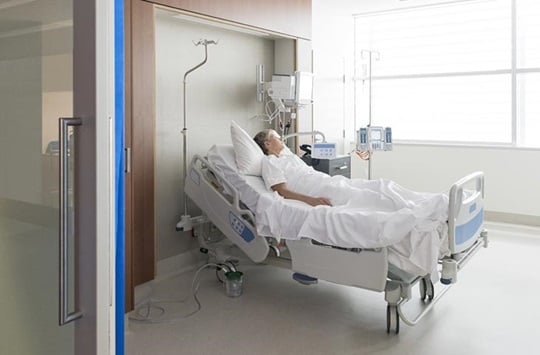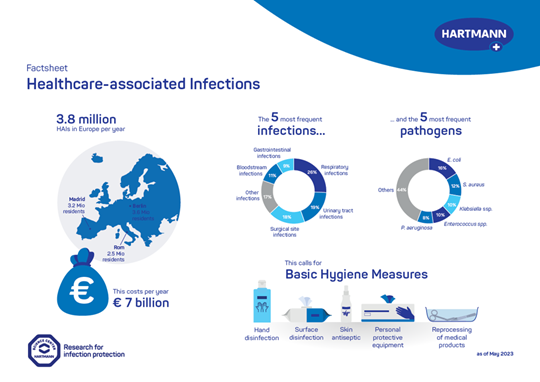HARTMANN SCIENCE CENTER

Infection acquired in the hospital or any other healthcare facility. According to the definitions of the Centers for Disease Control (CDC), patients suffer from a nosocomial infection when the infection was not present or incubating at the time of admission to the hospital and becomes evident 48 hours or more after admission. Most frequent infections include urinary tract infection, surgical site infection, ventilator-associated pneumonia, bloodstream infection and infections caused by multi-resistant bacteria.
Infections that are acquired due to the treatment in other medical facilities, e.g. in primary health care or rehabilitation clinics, also rank among nosocomial infections.
The transmission of microorganisms occurs, for example, through therapeutic or diagnostic measures. These pathogens which, under normal circumstances, would be harmless may trigger life-threatening infections or infections that prolong the healing process in immunosuppressed patients. Nosocomial infections increasingly involve bacteria that are multi-resistant to antibiotics. (See also Multi-resistant bacteria)
The most effective protection against hospital-acquired infections is the strict adherence to the measures described in Hygiene plans, especially Hygienic hand disinfection of healthcare workers.

Download our factsheet

Information on nosocomial/healthcare-associated infections